The Covid-19 pandemic resulted in unprecedented turnover rates the U.S. market has ever experienced, known as the Great Resignation. In 2021, the U.S. Bureau of Labor Statistics claimed that 47 million employees quit their jobs. However, as you look closer at employment within the past 13 years, you’ll notice an increasing trend in resignation rates. This graph shows us that the pandemic wasn’t the direct cause of the Great Resignation.
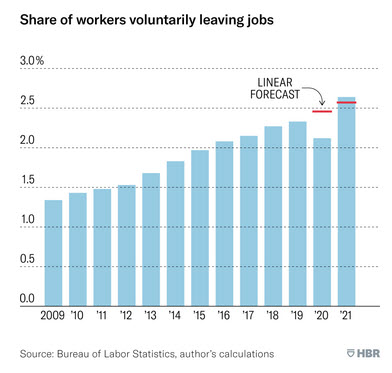

Despite the actual cause, the Great Resignation doesn’t appear to be going anywhere anytime soon. A recent U.S. Bureau of Labor Statistics survey reported that nearly 4.3 million employees quit their jobs in February 2022.
This article highlights the two trends resulting from the Great Resignation, the top three reasons employees leave their jobs, and recommends strategies to ensure a healthy and happy workforce.
What is the Great Resignation?


The Great Resignation is a historical event involving a record-breaking number of people quitting their jobs after the Covid-19 pandemic.
Employees leaving their jobs in droves have left executives scrambling to deal with the consequences. As a result, companies are battling to fill open positions quickly while also figuring out how to retain employees.
Among the chaos, analyses by Ian Cook (2021) have revealed two interesting trends:
Resignation is Highest Among Mid-Career Employees
According to studies, employees between 30 and 45 had the highest resignation rate. One possible explanation revolves around the risk of recruiting people with minimal experience for a remote position. In other words, increased demand for mid-career professionals has resulted in most of them quitting their jobs and searching for better opportunities.
Similarly, these mid-career employees may have exhausted themselves after months of heavy workloads, causing them to reconsider their personal and professional goals.
For example, I worked for an IT firm during the onset of Covid-19. We had to shift to a remote work environment which drastically affected our emotional and mental well-being. Under the pressures of an increasing workload and uncertainty about his business, the CEO behaved erratically. In sum, I felt isolated from the firm when we worked remotely, which caused me to reevaluate my career track. That experience is why I decided to leave that job and pursue my Ph.D. degree full-time.
Resignation is Highest in the Technology and Healthcare Industries
As a consequence of the pandemic, employees in industries with growing demands are experiencing increased workloads and burnout.


As Covid-19 made international headlines, a flood of new patients checking into hospitals overwhelmed the nurses, which led to burnout and high resignation rates.
To illustrate, there was a 34.1 percent increase in emotional exhaustion, which resulted in high turnover rates among nurses.
Incidentally, these trends show the importance of understanding why employees are resigning and taking adequate measures to prevent the Great Resignation from impacting your business.
Why Employees Are Resigning
A 2021 survey revealed the top three reasons employees resigned from their jobs: low pay, no opportunities for advancement, and feeling disrespected at work.
Low Pay
Interestingly, there appears to be a connection between the Great Resignation and market inflation — employees are looking for higher-paying opportunities to keep up with rising living costs.
I can personally speak to this as a resident of Austin, Texas. The housing market is increasing annually while typical income remains stable over time. Mix rising living costs with uncertainty surrounding a global pandemic, and you have yourself the recipe for a Great Resignation.
No Opportunities for Advancement
The opportunity to advance within your career goes much deeper than financial incentives – it stems from a basic psychological need to feel a sense of accomplishment.
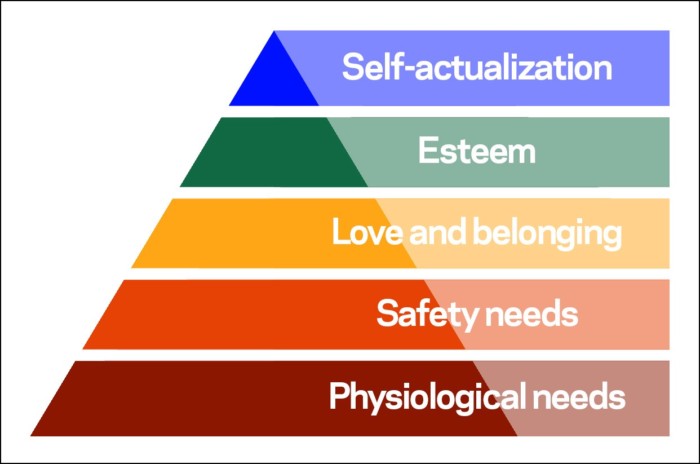

Maslow’s hierarchy of needs suggests that people have two different esteem needs: esteem for oneself and the desire for reputation or respect from others.
Unfortunately, if people’s esteem needs remain unfulfilled they develop a deficiency need. The longer these esteem needs are denied, the greater the desire to meet these needs.
In other words, employees recognized that if their organization couldn’t meet their esteem needs, they needed to pursue other jobs that could fulfill their needs by offering opportunities for advancement.
Feeling Disrespected at Work
Feeling disrespected at work is the most significant and impactful. We spend our lives in groups, and these groups heavily influence our thoughts, feelings, and behavior.
If belonging needs remain unfulfilled, severe psychological and emotional consequences such as sadness, helplessness, and depression are inevitable. For instance, brain imaging studies have revealed that feeling excluded from a group activates brain areas associated with physical pain.
As a result, employees realize they can fulfill their belonging needs by seeking group affiliation elsewhere.
Now that we’ve established that the Great Resignation surrounds employees attempting to meet their basic human needs, there are several measures your business can take to meet those needs.
Strategies to Meet Employee Needs
The fact of life is that needs drive behavior. Business leaders can implement various strategies depending on the type of needs.
Esteem Needs
We all share a deep-seated need for approval within our groups, which is a requirement for any external validation to have an effect. For example, any positive reinforcement from my leader won’t affect me because I feel they don’t truly care about me.
Fortunately, there are two strategies that leaders can implement to explicitly and implicitly fulfill the esteem needs of employees: gamification and star reviews.
Gamification
By incorporating elements of video games into the workplace, gamification aims to boost employee esteem needs. Two gamification elements help achieve employees’ fulfillment of esteem needs:
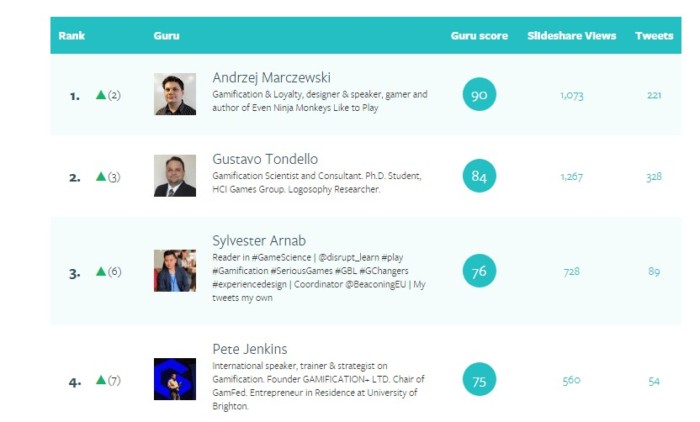

Leaderboards
Since employees view personal achievement as fulfilling esteem needs, developing a list of the top performers for particular groups of people is very effective for internal motivation.
Leaders can create leaderboards for virtually any event. For instance, a completed training leaderboard can kill two birds with one stone – updating employees’ knowledge, skills, and abilities (KSAs) while tending to their deep-seated need for approval.
Achievements
Providing employees with small, frequent, and tangible rewards can motivate them to work harder to collect more achievements. Something as simple as virtual badges or a point system can help employees feel accepted and acknowledged. More so, achievements can also boost inspiration by fueling competitiveness in an accepting setting.
Star Reviews
Star reviews are powerful – they encourage employees to continue performing in ways that generate high star reviews because they feel a sense of validation from good feedback. Thus, reviewers can leave star reviews of their coworkers’ work in a Teams group that leaders set up.
Belonging Needs
When we have a sense of belonging to a community, we feel like a part of something bigger than ourselves. Belonging fulfill our emotional need for close personal relationships, connectedness, and feeling part of a group.
Employees who have a sense of belonging feel like they have a community behind them, which helps them see the significance of their contributions. In fact, employees with high belonging are 3.5 times more likely to contribute to their full potential. There are two ways to ensure belonging needs are acknowledged: creating a psychologically safe space and giving employees a voice
Creating a Psychologically Safe Space
Members within psychologically safe spaces feel unconditionally accepted by their group, fulfilling their belonging needs. These spaces require a high level of trust among group members. With high trust comes open communication, where the group can voice opinions about anything without fear of rejection.
For instance, leaders can help set the tone by acting as role-model for vulnerability. For group members to express their emotions at work, they must feel accepted for it. In other words, members must feel that the culture accepts emotions as a normal part of humanity rather than something to repress.
As members feel a psychologically safe space within their group, they will have their belonging needs met.
Giving Employees a Voice


More passive members will be less likely to voice their opinions during meetings. Even though they choose to remain silent, adverse effects include feeling excluded, depression, lethargy, and absenteeism. Thus, ensuring each member has a voice requires proactively seeking input from those who rarely express themselves.
Leaders can facilitate this by asking for input directly during meetings. It’s important to establish group rules that ban interruptions or discounting others’ ideas. Creating a psychologically safe space is essential to allow more passive members to speak their minds and feel included.
If you would like suggestions on how to survive virtual work, check out my article!
Conclusion
The Great Resignation phenomenon refers to the unprecedented number of employees quitting their jobs in 2021. Initially, researchers suspected Covid-19 was to blame, but a closer examination of employee resignation rates revealed a steady increase over 13 years.
Interestingly, an in-depth analysis identified two interesting trends that resulted from the Great Resignation, which identified higher resignations among mid-career employees in the technology and healthcare industries. The top three reasons employees are resigning consist of low pay, no opportunities for advancement, and feeling disrespected at work.
Ultimately, employees are just looking to have their esteem and belonging needs fulfilled. There are various strategies business leaders can implement to ensure a happy workforce, including gamification, star reviews, creating a psychologically safe space, and giving employees a voice.
Organizational leaders must tend to their employees’ psychological needs as these needs drive behavior.
Bianca Cardenas, M.S., Ph.D., is a Fellow in Executive Assessment and Consulting with Leadership Worth Following. Dr. Bianca Cardenas empowers leaders to transcend competition by helping them unlock their people's potential.















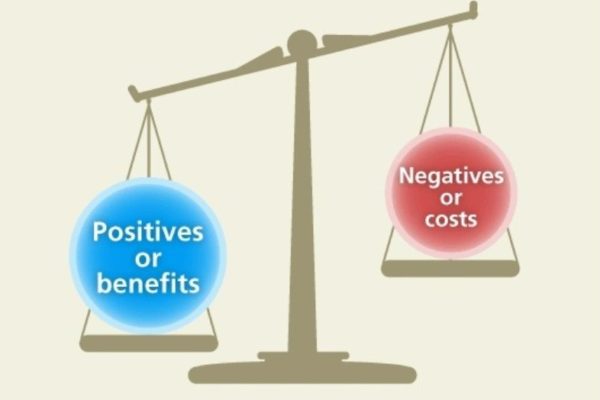





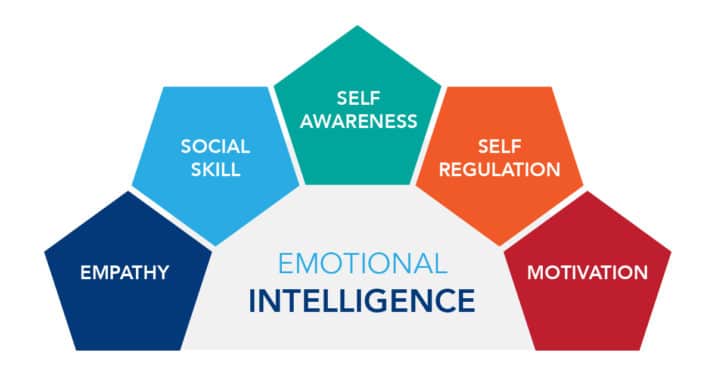

I don抰 even know the way I ended up right here, however I thought this put up used to be great. I don’t know who you might be however certainly you’re going to a well-known blogger should you are not already 😉 Cheers!
I do believe all of the concepts you have presented on your post. They’re really convincing and can definitely work. Still, the posts are very short for novices. May you please lengthen them a little from subsequent time? Thanks for the post.
Hi, thanks for your feedback.
I would love to write longer posts, but it would require more research, decreasing my posts per week from two to one.
Спасибо за группу за то, что поделились этим со всеми
людьми вы на самом деле узнаете кто вы говорить приблизительно!
Добавлен в закладки. любезно дополнительно поговорите с мой веб-сайт =).
У нас будет ссылка изменение договоренность
среди нами
Комод пластиковый Ужгород
Thank you very much for your support!